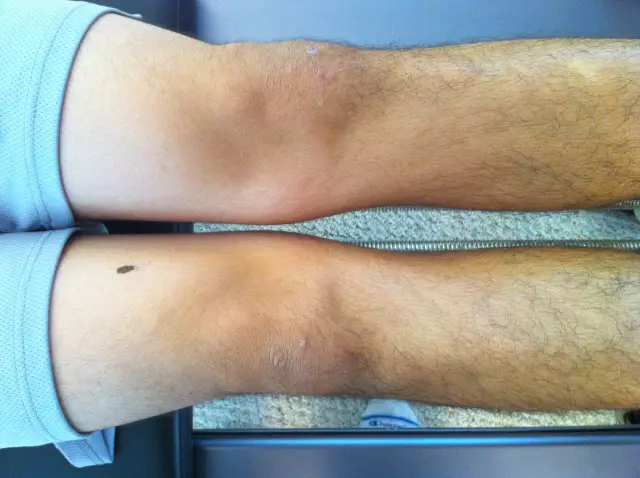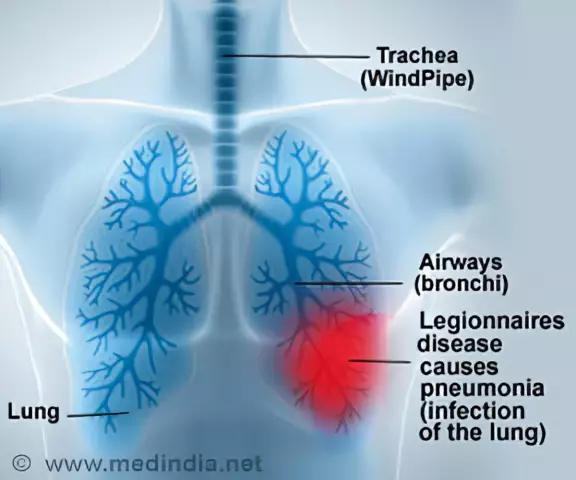- Author Rachel Wainwright [email protected].
- Public 2023-12-15 07:39.
- Last modified 2025-11-02 20:14.
Schlatter's disease
In essence, Schlatter's disease is a necrosis of the cartilaginous and bone tissue of the upper area - osteochondropathy of the tuberosity - of the tibia.
Schlatter's disease: symptoms, causes, diagnosis

In the overwhelming majority of cases, Schlatter's disease develops rather slowly and affects only one shin. Patients complain of such symptoms of Schlatter's disease as swelling and soreness at the point where the tendon of the quadriceps femoris joins the patella in the upper part of the lower leg, aggravated by walking, squatting and pressing. The course of the disease is chronic with periods of exacerbation.
Most often, Schlatter's disease is diagnosed in adolescents from nine to eighteen years old, especially males. The cause of its occurrence is considered damage caused by excessive impact of the knee tendon on the place of its attachment to the tibial tubercle, and, moreover, it can be both a single direct impact and regular microtrauma.
The risk group is made up of boys involved in traumatic sports - football, hockey, etc. A similar situation often develops as a result of shortening of the patellar tendon, however, according to worldwide statistics, only five percent of all patients with Schlatter's disease do not play sports.
Intensive growth rates of a teenager, regular muscle loads are transmitted through the tendon to the tuberosity of the tibia, provoking its separation, as well as inflammation and degeneration of the tendon.
When X-ray examination of this area, the destruction (fragmentation) of this part of the tibia is noted. In order to diagnose Schlatter's disease, ultrasound, radioisotope scanning, local densitometry and laboratory studies are also used, and in some situations - computed or magnetic resonance imaging.
Schlatter's disease treatment
Treatment of Schlatter's disease primarily consists in relieving pain with modern pain medications. Patients need to ensure limb rest, avoid unnecessary physical exertion requiring knee bending. As a rule, the symptoms of Schlatter's disease disappear after a few weeks.

In the treatment of Schlatter's disease, the effectiveness of electrophoresis with calcium and procaine, lidocaine, cocarboxylase, aminophylline, as well as ozokerite, paraffin and mud baths, therapeutic massage, physical education and spa treatment was noted.
In some cases, the treatment of Schlatter's disease may require the imposition of a plaster cast or the introduction of steroid drugs directly into the area of inflammation. Surgical treatment of the disease consists in removing free bone fragments; you may also need to make a hole in it to speed up healing, or even a transplant. The rehabilitation period after surgery can range from several months to one year.
Consequences of Schlatter's disease
Contrary to popular belief, Schlatter's disease does not go away on its own. Its treatment is a long process (up to several years), however, with timely treatment and persistence, the outcome for patients is favorable. Most patients recover from Schlatter disease after the completion of the growth process. In some cases, after recovery, bumps may remain in the patellar region. Also, one of the consequences of Schlatter's disease can be manifestations of meteosensitivity.
YouTube video related to the article:
The information is generalized and provided for informational purposes only. At the first sign of illness, see your doctor. Self-medication is hazardous to health!






